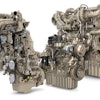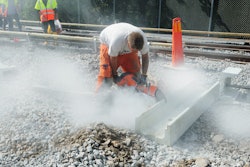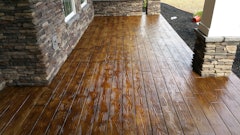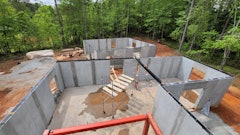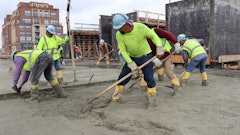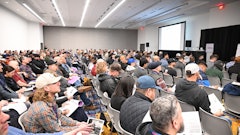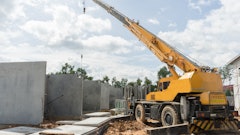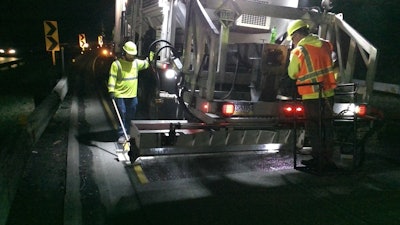
Skid resistance on roadways is imperative to maintaining the safety of the traveling public, especially around curves and at high speeds.
Recently, the Connecticut State Police and the Office of District 3 Maintenance requested the Office of Engineering investigate the curves along the Merritt Parkway in Greenwich, CT due to a high frequency of crashes occurring during wet conditions. The investigation included skid-tests to evaluate the friction of the pavement and ground survey to evaluate the curve geometry.
While skid-test results debunked the theory that the pavement surface was responsible for vehicles losing control in these curves, the sharp horizontal curves of the pavement and areas where excessive braking was occurring resulted in less pavement friction which lead to an increase in crash frequency.
“One thing that became clear during the testing was that speed is a contributing factor with all these crashes,” Michael Cherpak, P.E., Project Manager for the Connecticut Department of Transportation (CTDOT) says. “This stretch of Route 15 (Merritt Parkway) was resurfaced in 2008 and skid-tests yielded friction factors much higher than expected given the age of the surface and the frequency of crashes occurring.”
So the DOT chose to provide "superelevation and roadway friction improvements" to four curves on the parkway to improve safety within these stretches of roadway.
Engineers used the ground survey information to perform an analysis of the roadway geometry, including its superelevation, in search of any geometric issues contributing to the higher crash frequency. That analysis revealed some curves could benefit from geometric improvements, but many others met standards.
“A project was proposed (State Project No. 173-484) to address the geometric issues discovered by the engineering investigation,” Cherpak says. “These geometric improvements included bituminous pavement wedging, increasing roadway superelevation to standards and ensuring the proper transition lengths existed into and out of those curves, bringing the roadway geometrics up to standard for the design speed of the roadway.”
The department also made the determination to install High Friction Surface Treatment (HFST) as a crash reduction strategy on all curves investigated under this study, including those curves being geometrically improved.
Improving Merritt Parkway
Merritt Parkway was designed and built in the 1930s for very different vehicles using the roadway for a very different purpose than what it’s used for today. The posted speed limit for a majority of the roadway is 55 mph with some areas in Greenwich posted for 50 mph with advisory signs suggesting 45mph.
The department realized that realignment of the parkway’s horizontal geometry would increase the speed of the roadway, but may prove difficult given this roadway’s historical significance and place on the National Register of Historic Places.
“The proposed realignment would require a significant and lengthy environmental analysis,” Cherpak says. “The improvements suggested under project 173-484 were able to be implemented in an expeditious manner and are expected to provide a meaningful improvement.”
For this project, the existing pavement in these curves is being milled and replaced with new hot mix asphalt (HMA) layer. The HFST consists of a polymeric resin binder followed by an application of calcined bauxite aggregate onto the surface of the new HMA.
“This work is being applied at night, during a work period where traffic is reduced to one-lane and re-opened to traffic at the conclusion of the work period, Cherpak says. “The specification requires use of a truck mounted application machine and sweeper to meet clean-up requirements.”
Project 173-484 is being construction by Water Construction Co, Inc. Their low bid was $2,728,316.50 for contract items. They were allotted 124 calendar days to complete the work. The Engineers estimate included 27,065 s.y. of HSFT. The Bid price for HFST came in at $568,365 at $21/s.y.
HFST plays a large role in the Every Day Counts Program. Federal dollars will pay for 80 percent of the project and the state will pay 20 percent of the costs.




